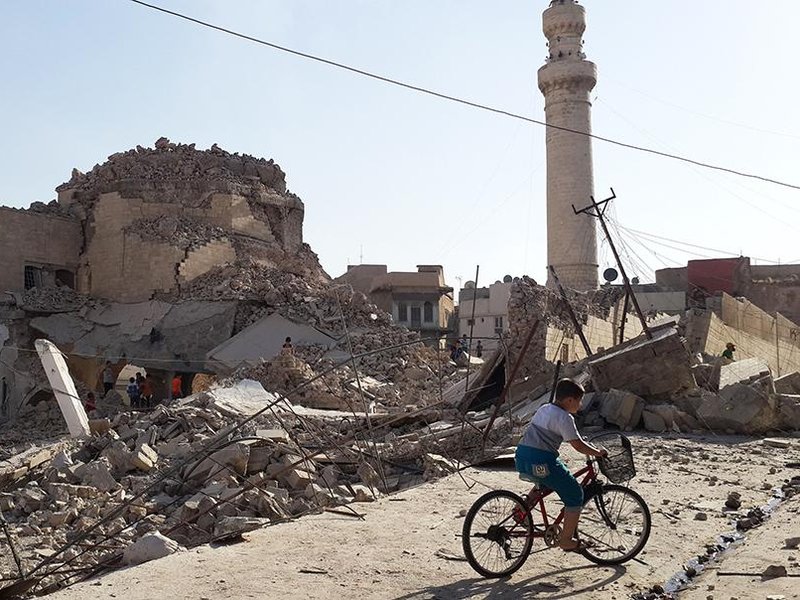DepthReading
Why We Need to Fight to Save Mosul’s Cultural Heritage
A bicyclist rides by the destroyed old mosque and tomb of Nabi Jerjis, also known as Saint George, in central Mosul in July 2014. (AP)
Mosul is an ancient city on the banks of the Tigris River, adjacent to the even more ancient archaeological site of Nineveh, which looms high above modern minarets, and another Assyrian site, Nimrud, 20 miles to the south. The second largest city in Iraq, Mosul has long hosted an incredibly diverse religious and ethnic population including Sunni, Shia and Sufi Muslims, Christians, Jews, Zoroastrians, Sabaen-Mandaeans, and Shabaks, Arabs, Yezidis, Kurds, Turkmens, Armenians, Assyrians and others. These communities have, over centuries, left their exceptional cultural markings on the landscape—hundreds of mosques, churches, shrines, holy sites, graveyards, libraries and museums.
Mosul came under the control of the Islamic State (ISIS) in June of 2014. Coalition forces led by the U.S.-supported Iraqi army and the Kurdish Peshmerga launched a counterattack in October 2016 and have recently retaken most of the eastern half of the city. Clearly, freeing Mosul’s citizenry from the brutal grip of ISIS is the first priority of the current campaign. But as the battle becomes increasingly heated and focused on the historic old city, coalition forces are also cognizant of the need to protect the region’s cultural heritage.
When ISIS first took Mosul, it burned the city’s library destroying hundreds of historic manuscripts. Citizens, proud of their multicultural heritage, joined hands in a human chain and repelled ISIS’s first attempt to destroy the Sheikh Fathi mosque and shrine with stones, only to lose out the next day to bulldozers. The world winced when ISIS blew up the mosque and tomb of Nebi Yunis—the Biblical Jonah—and that of Nabi Jerjis, also known as Saint George, and cringed watching the ISIS-produced video of thugs destroying statues in the Mosul museum and carved reliefs at Nineveh. ISIS wanted to illustrate as virtue its fanatical drive to erase people’s history and identity; and the world rightly took it as the barbaric violation of human rights.
We are Katharyn Hanson, an archaeologist and fellow at the Smithsonian Institution’s Museum Conservation Institute who trains Iraqis in nearby Erbil, and Richard Kurin, the Smithsonian’s acting provost and under secretary for museums and research. We have been actively engaged over the past year training Iraqi cultural heritage practitioners and laying the groundwork to prevent further damage. To assist on the ground, experts from the U.S. Committee of the Blue Shield, the University of Pennsylvania and the Smithsonian Institution produced a pocket booklet Guide to Mosul Heritage in English, Arabic and Kurdish. Distributed to the troops now engaged in battle and in its second printing, the booklet provides maps, coordinates, satellite images and street view photographs of cultural heritage sites—so that their destruction can be avoided if possible.
Category: English
DepthReading
Key words:

